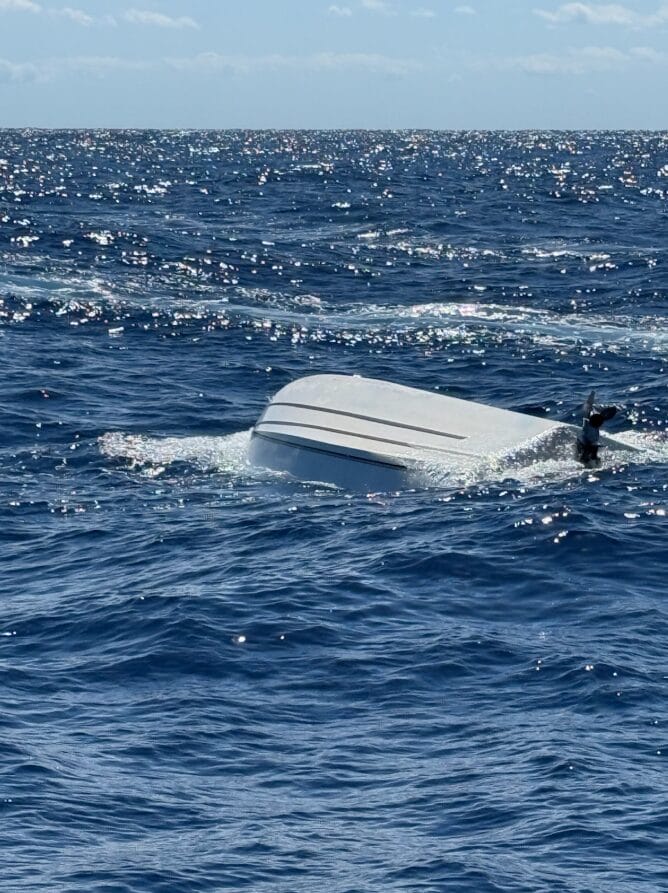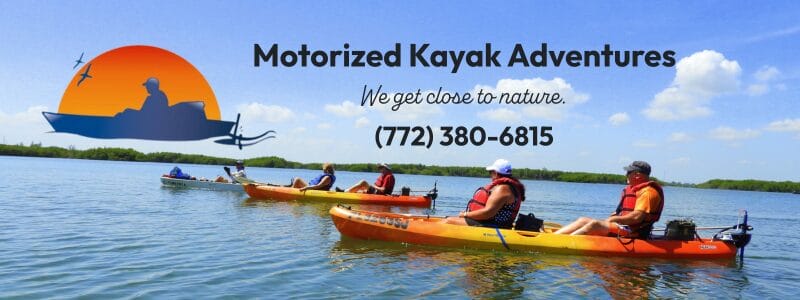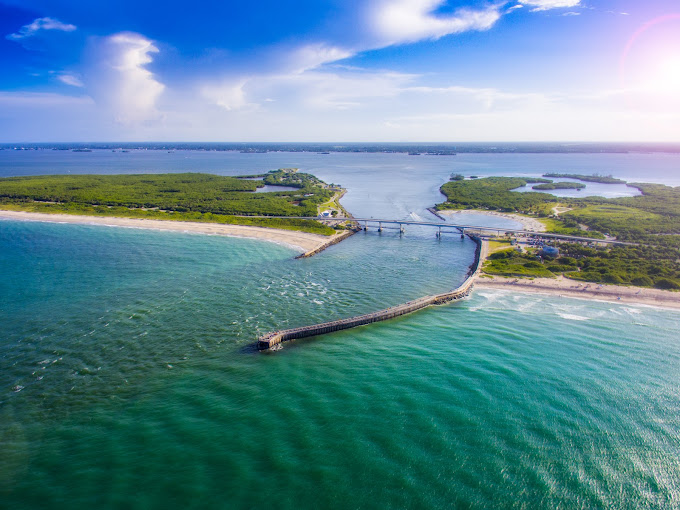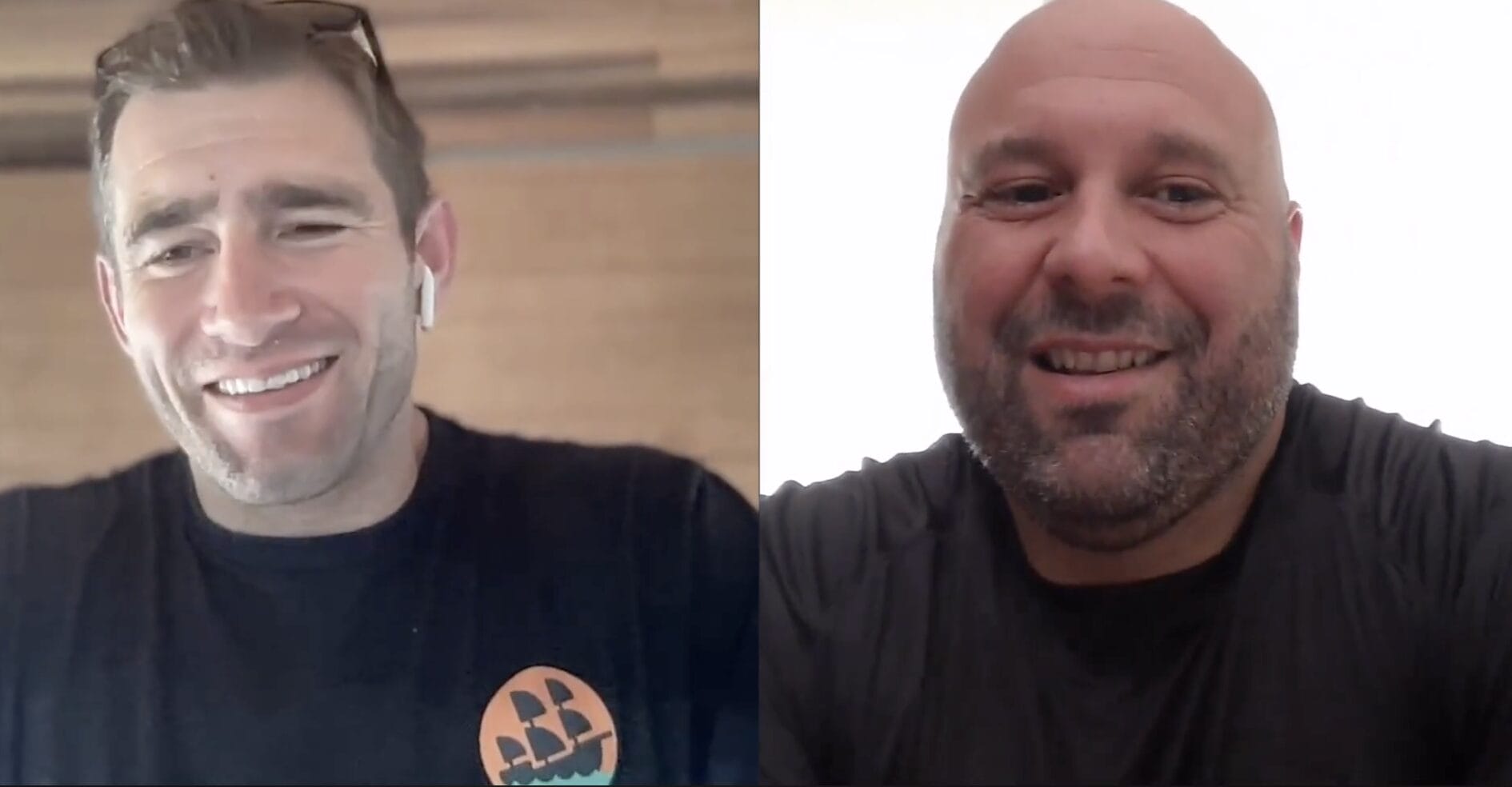The most dangerous inlets in Florida are worth keeping in mind, whether you’re visiting the Treasure Coast or any other nearby areas. While the state is home to some of the most idyllic beaches on the East Coast, its beautiful coastline is also home to some of the country’s most dangerous inlets. These narrow channels connect inland waterways to the open ocean, and can range from calm to dangerous.
It’s more important than ever to understand the most dangerous inlets in Florida so you can stay safe when you’re on the water. A combination of swift tidal currents, unpredictable wave patterns, submerged rocks, and shifting sandbars makes Florida’s inlets a force to navigate with extreme caution.
This helpful guide explores some of what are considered Florida’s most dangerous inlets. We delve into what makes each one hazardous and what boaters need to know to stay safe.

Why Can Florida Inlets Be Dangerous?
Florida has a unique geography. This means it has long barrier islands, lagoons, and shifting sandbanks. This makes some of its inlets especially volatile.
A strong tidal flow tops the list of the dangers of these inlets. These narrow passages amplify water movement between inland estuaries and the ocean. Combine that with breaking waves due to wind and swell conditions, all causing sudden breakers at the mouth of these inlets.
The busier a waterway is, the more dangerous the inlet can be.
In South Florida, the sheer number of boats can create a wake that makes for a tough trip. Fortunately, the Treasure Coast doesn’t experience this as much, with more remote and less-traveled inlets.
As sandbars change due to the frequent shift of bottom contours, boaters are sometimes subject to the harrowing dangers of unmarked hazards. Additionally, crosscurrents and shoals are known for throwing experienced mariners off course.
Boaters experience some of the most hazardous conditions of these ocean inlets, especially when a strong ebb tide collides with onshore winds. This dangerous combination creates steep, choppy waves with reduced spacing between crests.
Come winter, inlets become even more dangerous as stronger winds kick up. Before heading out, boaters should always check marine forecasts. Additionally, they must understand tidal patterns and know both their vessel’s limits and their own.
If boaters find themselves returning from offshore when conditions worsen, they should wait for a flood tide to significantly reduce wave severity. Always keep in mind that, from offshore, it’s virtually impossible to determine inlet conditions accurately. Even worse, nighttime magnifies the risk.
The Most Dangerous Florida Inlets
Boynton Inlet – Boynton Beach, FL
View this post on Instagram
This narrow inlet is boxed in by concrete walls, which means there is no margin for error. When incoming waves collide with outgoing tides, a standing wave is created that can swamp even large boats.
Strong currents are known for pulling in anglers, making rescues a common occurrence. This inlet is known as “the most dangerous inlet in the universe” and is especially treacherous for small boats, paddleboards, and kayakers.
Jupiter Inlet – Jupiter, FL
View this post on Instagram
Don’t let the wide Jupiter inlet deceive you. Its offshore shoals whip up suddenly, creating harsh, unpredictable waves.
Every trip through this inlet is potentially hazardous due to shifting sandbars, resulting in varying conditions each time. Even seasoned boaters are known for being caught by rogue swells. Needless to say, navigation in this inlet demands experience and extreme caution.
Haulover Inlet – Miami, FL
View this post on Instagram
Baker’s Haulover Inlet (Haulover Inlet, for short) is an artificial channel in Miami-Dade County and one of the most dangerous inlets in Florida. It connects the northern end of Biscayne Bay with the Atlantic Ocean and was cut through a narrow point in the sand between the cities of Sunny Isles and Bal Harbour.
This inlet is known for dangerous waves, especially during the outgoing tides and onshore winds. Since the channel is narrow and has unpredictable currents, the combination created a washing machine effect.
This means that people are routinely knocked off jet skis, and small vessels are flipped. Local authorities strongly advise that only experienced captains attempt this crossing when conditions are rough.
Sebastian Inlet – Sebastian, FL
Although surfers love this inlet in Sebastian, Florida, it’s still fairly dangerous and among the worst inlets in Florida. Its strong rip currents and rocky jetties make it extremely dangerous for everyone. New boaters quickly find themselves disoriented due to fog, fast tidal flow, and narrow passes. This is especially an issue when the tide is flowing out.
Boats have been wrecked at this inlet, and to further complicate its dangers, floating dredge pipes create surprise obstacles. Sebastian Inlet State Park sits on its banks, where visitors can be seen enjoying the surrounding area. This inlet is a local hotspot for rescues and emergency calls, especially with the rip currents that pull grown adults off their feet with ease.
Boca Raton Inlet – Boca Raton, FL
View this post on Instagram
Boca Raton Inlet is a shallow, unmarked channel and is lined with short jetties and unpredictable wave faces. At low tide, you can expect depths to drop to just 1–3 feet. This creates severe shoaling both inside and outside.
During tides or winds, waves break across the entrance, trapping unsuspecting vessels along the way. Unless the weather is calm, you should avoid this inlet, especially during high surf warnings and during tidal changes.
St. Lucie Inlet – Stuart, FL

This St. Lucie Inlet in Stuart is incredibly unpredictable because of tides, shoals, and sudden wind shifts. Chaotic, steep waves are known to form, especially during ebb tide.
The shifting sandbars frequently ground and trap vessels, especially near the jetties. When low tide combines with heavy seas, conditions are known to be worse.
Ponce de Leon Inlet – New Smyrna Beach, FL
View this post on Instagram
Ponce de Leon Inlet is infamously known for rough surf, shark bites, and dangerous, submerged rocks. Small vessels are notoriously caught off guard by fast currents that sweep them toward boat lanes.
More than 20 lives have tragically been lost at this inlet due to unstable channels and surf conditions, making it highly dangerous for both beachgoers and boaters. To keep up with shifting hazards, navigation markers are frequently moved.
St. Augustine Inlet – St. Augustine, FL
View this post on Instagram
Close to the entrance of this inlet are shifting sands and shallow zones, presenting boaters with year-round challenges. Markers move often and, during storms and swells, are difficult to see, adding to the dangers of this inlet.
Since the current shifts quickly, navigation is usually stressful and dangerous. To navigate this inlet, you need up-to-date charts, strong local knowledge, and an experienced navigator.
Pensacola Pass – Pensacola, FL
This pass is known for its intense tide swings that create swirling eddies and rips. The chaos is amplified with shoals. Once inside, space to maneuver is significantly limited. Many inexperienced swimmers and boaters mistake a calm Gulf for a calm inlet.
When Gulf storms hit, this inlet and reentry are impassable unless you have serious skill and impeccable timing. Even then, it’s still hazardous. Traffic from commercial vessels further adds to the risk factor of navigating this inlet.
Government Cut – Miami, FL
View this post on Instagram
A combination of strong currents, dark jetties, and heavy traffic makes this Miami inlet a high-stakes zone. Since cargo ships and cruise liners heavily rely on this path, there is little room for error at the Government Cut Inlet.
Nighttime navigation is hazardous due to the presence of numerous unlit obstacles. Boating accidents in this high-traffic zone are tragically frequent, and human error is amplified.
Safety Tips for Navigating Florida Inlets
Although dangerous, it’s not impossible to navigate Florida’s inlets. However, you need to prepare beforehand and always respect the ocean.
Consider these safety tips:
- Always check tide and weather reports before entering any inlet
- Never attempt to cross an inlet alone or in unfamiliar waters
- Always study local charts and speak to other boaters at nearby marinas
- Avoid crossing inlets during an outgoing tide and an incoming swell
- Always wear life jackets and ensure radios and safety gear are in proper working order
Respect the Inlet, Protect Your Life
Florida’s beautiful waterways offer unparalleled adventures, but inlets are not something you should ever take lightly. Every year, search-and-rescue crews respond to preventable emergencies. This is due to a lack of planning and precautionary measures.
Whether you’re a boater, angler, paddleboarder, or kayaker, you always need to know the risks of the most dangerous inlets in Florida, along with other inlets that can quickly turn hazardous. It very well can be the difference between a great day on the water and a disaster.







